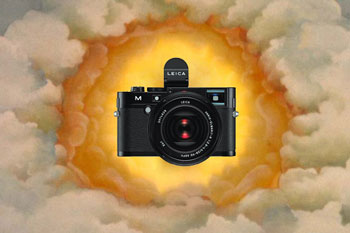Agnostic Lloyd Chambers — a respected authority on Leica and quality photography — might have hit the nail on the head the other day with his thoughts on Leica gear becoming neck jewelry. Well those are not his words in the short editorial Hit Rate and Image Quality and Reliability and Price, the Camera World Upended. Some photography sites and respected working professionals are brand sponsorship in disguise, so whom to trust when deciding on gear. Now the following is only controversial if one has cognitive committments based on firmly held assumptions. But, says Chambers, prospective Leica M shooters hankering for the Leica M Typ 240 with the 35mm F1.4 Summilux-M ASPH should take a serious look at the Sony RX1R with its Zeiss 35mm F2 Sonnar. Well that’s because the Zeiss 35mm F2 Sonnar comes with a free 24MP full-frame camera (the RX1R) for about $2,300 less than the Leica 35/1.4 Summilux lens alone.

Now if a camera A is a lot about mojo and legacy with a tendency to suffer character issues in field use such as resets and freezes while a camera B delivers accurate autofocus, reliable auto exposure, better noise handling, greater dynamic range along with a massively better viewing experience and custom configurability — plus problem-free reliability along with equal or better sharpness –, and all this for a third of the price, would you still buy camera A?
We’re entering pseudo-religious territory. While camera A enjoys cult-like status among many loyal disciples willing and affluent enough to turn a blind eye to what others object to, camera B makes more rational sense. Or, as Lloyd Chambers puts it, rambling philosophically:
Doesn’t the answer sometimes depend more on cemented cognitive committments more than facts?
Personal preferences (some justifiable and some arbitrary and some je ne sais quoi) should not be dismissed from consideration, but it’s critical to distinguish preferences from rationalizations that defend unsupportable cognitive committments. To be objective based on some usage-based scenarios, which need not be the same for everyone.
Camera gestalt is changing rapidly, upending longstanding assumptions.
And when a camera gets in the way of testing in the field making real images, one has to keep a scrupulously open mind and allow internally-defended cognitive commitments to be relaxed and overcome, says Chambers.
One of Leica’s biggest pros and at the same time cons is the rangefinder. People love it, some can’t seem to live without it, others belittle it as an outdated reminiscent of a past optical engineering marvel.
Fact however is, the archetypal Leica user is not the youngest and vision does often not cooperate.
There is no Holy Grail in camera technology. But as the human being is the most likely fallible element in the workflow, why not increase the hit rate probability with the appropriate technologies that can help.
Change is always an answer to deficiencies and demand. And as cameras are changing so rapidly these days upending long-cherished beliefs it’s only fair to ask oneself as a photographer: what am I assuming?
What’s holding me back?
However, this is not a black-and-white world. The very minimalist Leica approach might be the one freeing you and letting you concentrate on what matters because technology, after all, only offers partial solutions.


